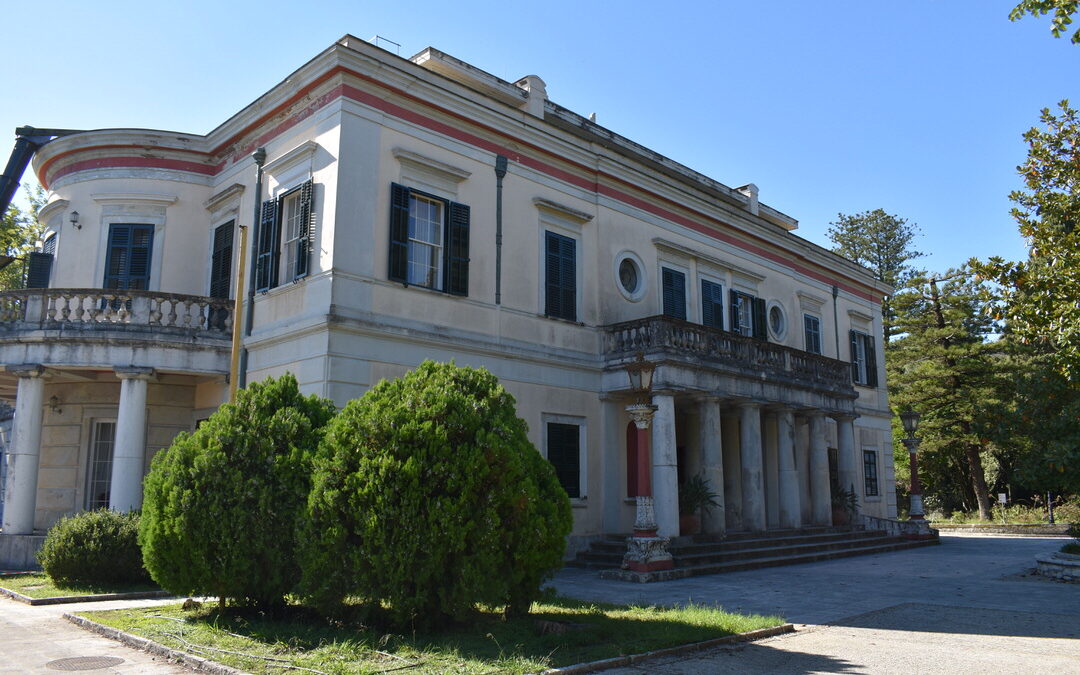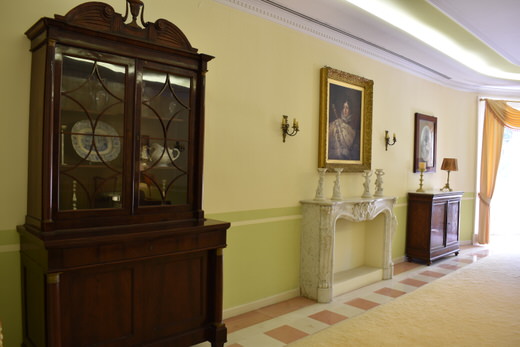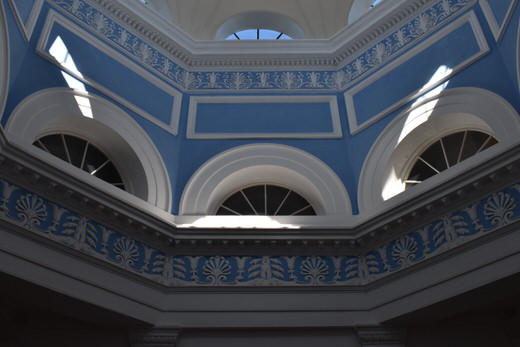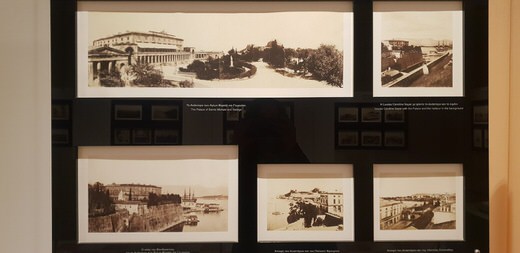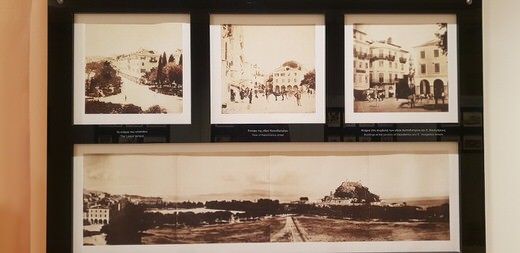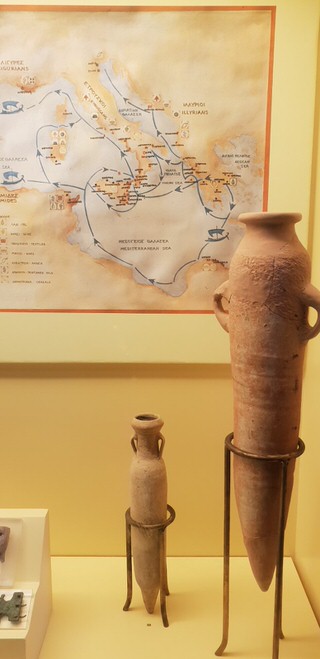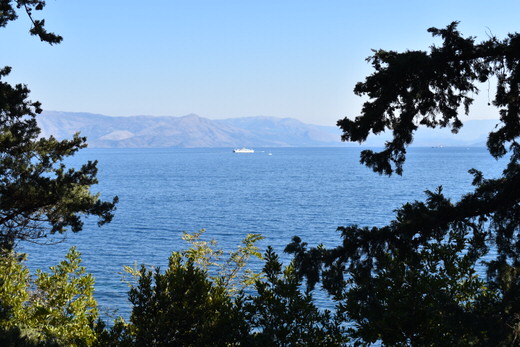The highlights of Corfu are not just walking around the gorgeous paved alleys of the old town, having a coffee under the elegant Liston arcade or enjoying the unique traditions of Easter. The beloved Ionian island that’s at its best during springtime, is full of sights and monuments but has also an amazing landscape worth discovering. Those who travel to the island of the Phaeacians will find a plethora of interesting landmarks close to the old town of Corfu, that they’re certainly worth a visit. Closely associated to the island’s history and within a walking distance of only 3km away from the old town of Corfu, Mon Repos palace welcomes us in a dreamy scenery that spreads from its elegant interior to its lavish gardens.
The Analipsis Hill where it’s located and from where you can enjoy a majestic view towards the Ionian blue, is an area of archaeological importance, as historians indicate it as the location of the ancient town of Corfu. The area had been inhabited since the 8th century b.C. and excavations show that the ancient market was built opposite the present location of Mon Repos palace. That’s obvious as you approach the palace and you notice a part of the ancient wall that remains on the other side of the road that leads to Mon Repos. It was built in the 4th century b.C. and some parts of it reached a height of 6 meters. The part you can see today with its watch tower, is called The Tower of Nerantziha and was preserved thanks to its incorporation to a Byzantine church that was later built on the site.
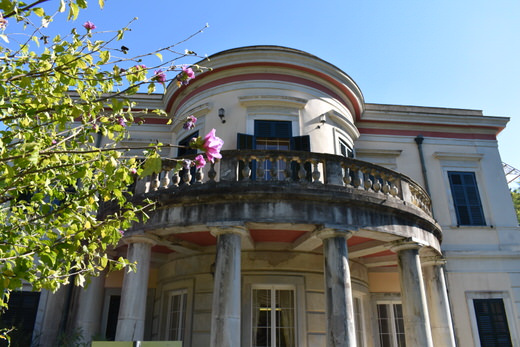
The famous landmark with the rich history houses the Museum of Palaiopolis and is ideal for spring walks in the impressive estate that surrounds it.
The Museum of Palaiopolis, as ancient Corfu is called, is now being housed in the palace of Mon Repos, which – like some other grand scale projects in Corfu – owes its realisation to Sir Federic Adam, the British Lord High Commissioner of the Ionian islands. Lord Adam, who succeeded in office Sir Thomas Maitland, was unlike his predecessor, especially popular and highly esteemed by Corfiots. On his part, he loved the island too, promoting the cultural development and the intellectual life of Corfu and commissioning the construction of public buildings during his govern ship. His Corfiot wife, Nina Palatianou, member of one of the island’s oldest families, had certainly played a part in Adam’s goodwill towards Corfu and in his decision of building the grand mansion that was later named Mon Repos, which was believed to be his present to her.
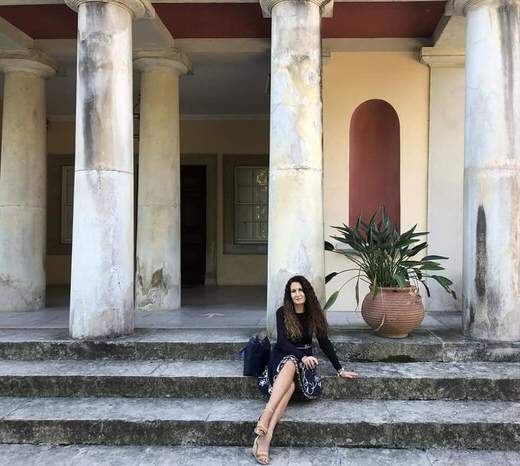
The architect in charge of designing the residence was Sir George Whitmore, who is also responsible for the designs of the imposing Palace of St Michael and St George, that still stands next to the Spianada square, in the old town of Corfu. For this countryside mansion, the chosen style was Regency and so today the building stands as a well-preserved model of neoclassical architecture in Regency period. Following the great achievements brought about by the Industrial Revolution as well as the changes in arts, culture and aesthetics, Regency style was dominant in Great Britain and got its name from George IV who acted as regent at that time ( 1811-1829 ).
Main characteristic of this style, as one can obviously notice at Mon Repos’ facade, is the combination of classical Ancient Greek elegance and simplicity with Romanticism. The same style was adopted for the interior design too, avoiding excess luxury and promoting a sense of comfort.

The couple of Adam – Palatianou stayed in the mansion just for two years, in the period 1831-32, until they departed for Adam’s new post in India. Since then, all the other Commissioners stayed here, until the unification of the Ionian islands with the free Greek state in 1864. It was then that the mansion and its estate was granted as a gift to king of Greece, George I. He was the one that gave the building the name that it’s now known by, which means “my repose” , as it was used as a summer royal residence. But the history of Mon Repos is linked to other European royals, as it had accommodated Elisabeth, Empress of Austria in 1863. And so charmed she was by the splendid Corfiot land that she finally had her own, even grander palace – Achilleion – built in Gastouri area. And also, Philip, the late Duke of Edinburgh and husband of Queen of Great Britain, Elisabeth II, was born in Mon Repos in 1921, as a plaque informs us when entering the estate. Since 1967 when the former Greek royal family lost the court battle about the palace’s ownership, Mon Repos belongs to the Municipality of Corfu. And apart from being a magnificent building worth visiting for its history and architecture, it also houses the Museum of Palaiopolis.
On the ground floor some of the spacious rooms that benefit of a magnificent view towards the gardens, revive the decorating style of Adam’s era. The light blue living room with many portraits on its walls and the bright, yellow dining room with the wooden, round table and the marble fire place, help us form an idea of everyday life of the mansion’s residents. Before moving on to the first floor, its worth spending some time at the very interesting permanent exhibition “Photographic Testimonies – Corfu 1856-186”, which depicts aspects of the old town and the Corfiot countryside in the middle of the 19th century. John Devenport Shakespear, a Captain in the British army who lived in Corfu that period, captured through his lens unique aspects of life on the island, when Corfu was still under British rule. Indeed, it’s really interesting noticing and realising through these black and white photos of the old town, how some parts of it have remained practically unchanged until our days. Also worth visiting on the ground floor, is the elegant atrium, with a collection of drawings that depict some of Mon Repos’ botanic garden’s species.
The collections of the Museum of Palaiopolis are exhibited on the palace’s first floor. There, among photographic material from the locations forming the ancient city of Corfu and their excavations, you can see statuettes, worship objects found in sanctuaries, vessels and equipment of everyday use. They all aim to shed light on the ancient market’s role as a commercial, political and economic centre. At the same time, the informative exhibition “Circumnavigation” presents the significant part Corfu has played in the history of the Meditteranean Sea due to its strategic location.
As you leave the palace’s interior, prepare yourself for a long walk as you explore the estate’s gardens with the lavish vegetation. The green area that surrounds the palace also reflects the style that was then popular in the lay out of private and public gardens. In accordance with the 19th century botany and gardening aesthetics, the gardens of Mon Repos aimed to offer their inhabitants direct contact with nature, having a functional role and being an organic extension of the house. Beautiful fruit trees and plenty of flowers have been planted around the mansion, creating beautiful views and colourful images when looking out of the windows. But as you stay further away from the palace, the scenery changes and looks more like a dense forest. Huge tress, olive trees, laurels, oak trees, some tropical plants and other trees with giant trunks that look like sculptures, will make you feel awe and put you in a mood of wanting to explore more.
The descending, shady paths that run through the 230 decares of the botanic gardens offer spectacular views towards the island’s east coast, with turquoise waters and bright sun rays emerging through rich foliage. And then, at the end of your walk, the most unexpected surprise awaits: You’ll suddenly see the ruins of two ancient temples among trees and bushes. They are the Temple of Hera dating in 610 b.C. and Kardaki temple, two early models of archaic Greek architecture. You can wander freely among the standing and laying columns, before you follow the same path back to Mon Repos’ yard for some more idyllic views of the Ionian sea.
Should you decide to head back to the old town on foot, follow the road that leads to the famous site of the Windmill in Garitsa bay and then walk along the coastal Demokratias Avenue. This way you will enjoy another wonderful route, this time heading to the picturesque old town, having the view of the imposing Old Fortress as a compass in every step of your walk.

